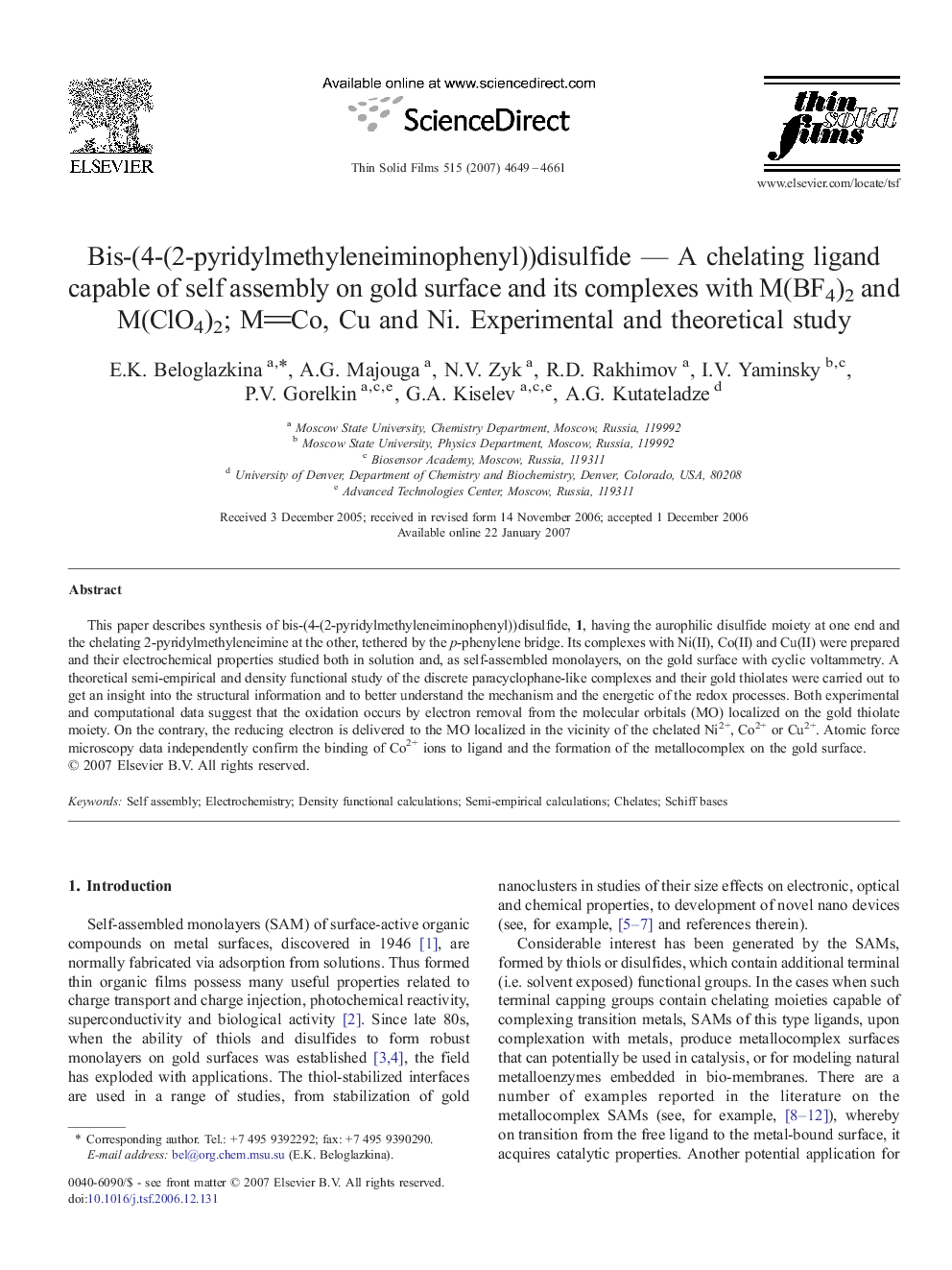| Article ID | Journal | Published Year | Pages | File Type |
|---|---|---|---|---|
| 1676447 | Thin Solid Films | 2007 | 13 Pages |
Abstract
This paper describes synthesis of bis-(4-(2-pyridylmethyleneiminophenyl))disulfide, 1, having the aurophilic disulfide moiety at one end and the chelating 2-pyridylmethyleneimine at the other, tethered by the p-phenylene bridge. Its complexes with Ni(II), Co(II) and Cu(II) were prepared and their electrochemical properties studied both in solution and, as self-assembled monolayers, on the gold surface with cyclic voltammetry. A theoretical semi-empirical and density functional study of the discrete paracyclophane-like complexes and their gold thiolates were carried out to get an insight into the structural information and to better understand the mechanism and the energetic of the redox processes. Both experimental and computational data suggest that the oxidation occurs by electron removal from the molecular orbitals (MO) localized on the gold thiolate moiety. On the contrary, the reducing electron is delivered to the MO localized in the vicinity of the chelated Ni2+, Co2+ or Cu2+. Atomic force microscopy data independently confirm the binding of Co2+ ions to ligand and the formation of the metallocomplex on the gold surface.
Keywords
Related Topics
Physical Sciences and Engineering
Materials Science
Nanotechnology
Authors
E.K. Beloglazkina, A.G. Majouga, N.V. Zyk, R.D. Rakhimov, I.V. Yaminsky, P.V. Gorelkin, G.A. Kiselev, A.G. Kutateladze,
